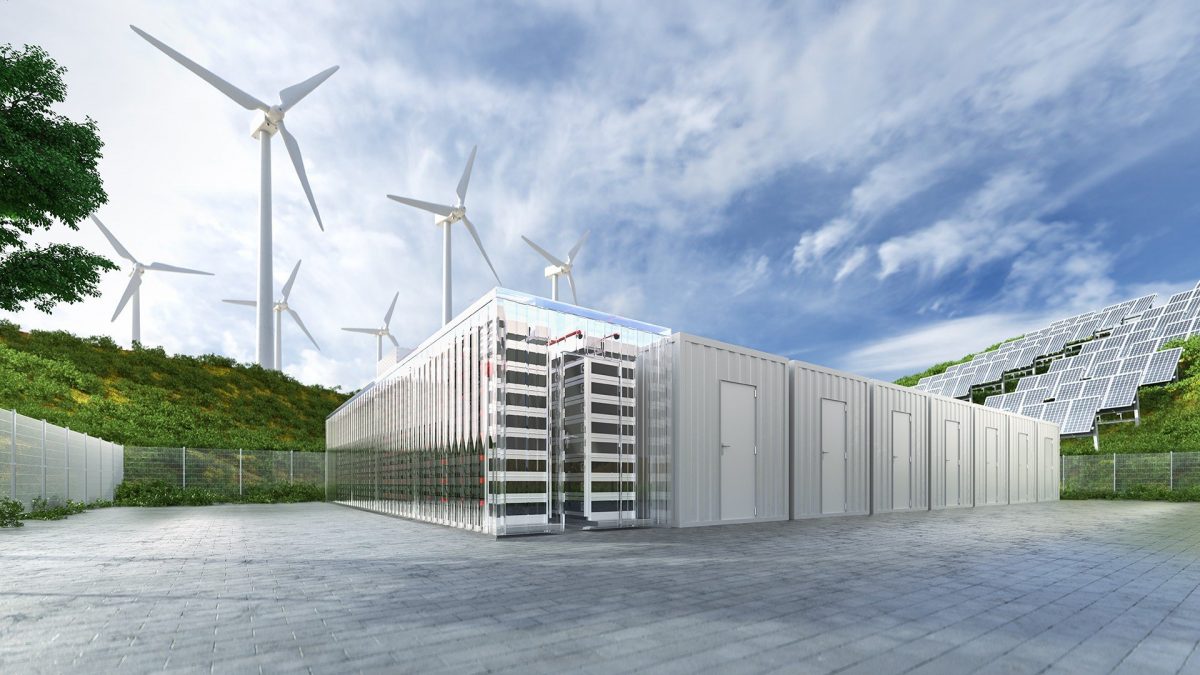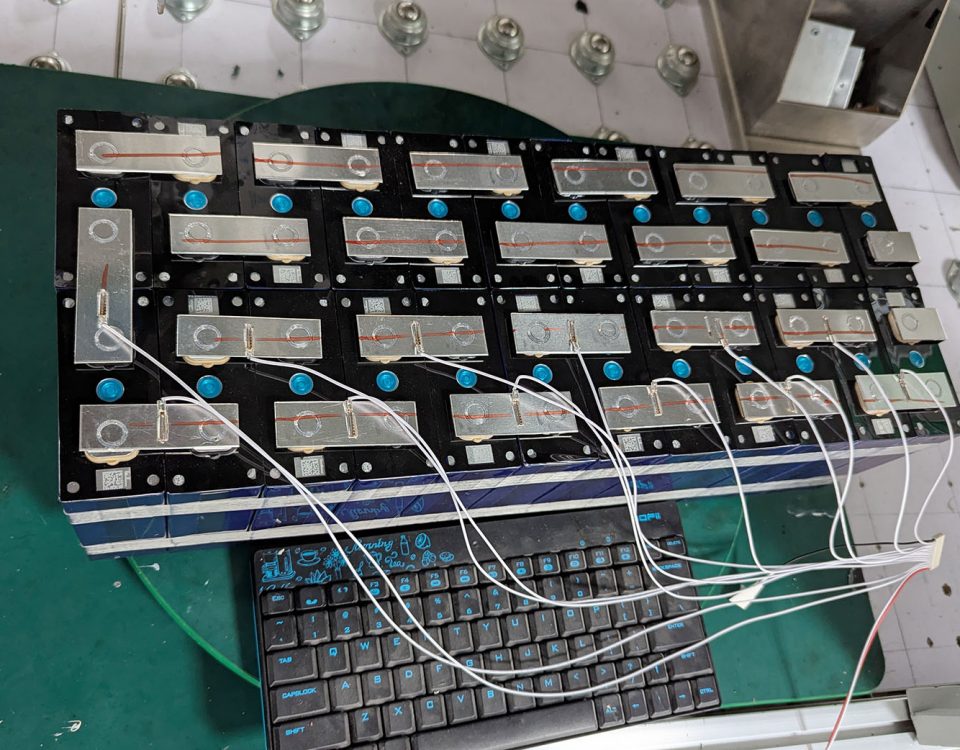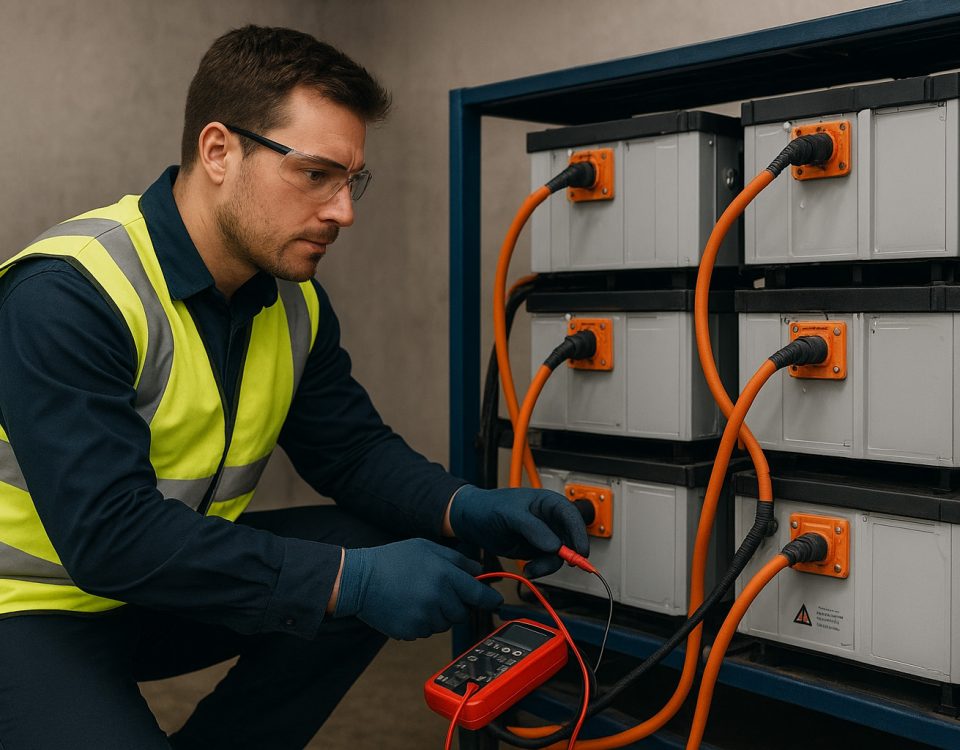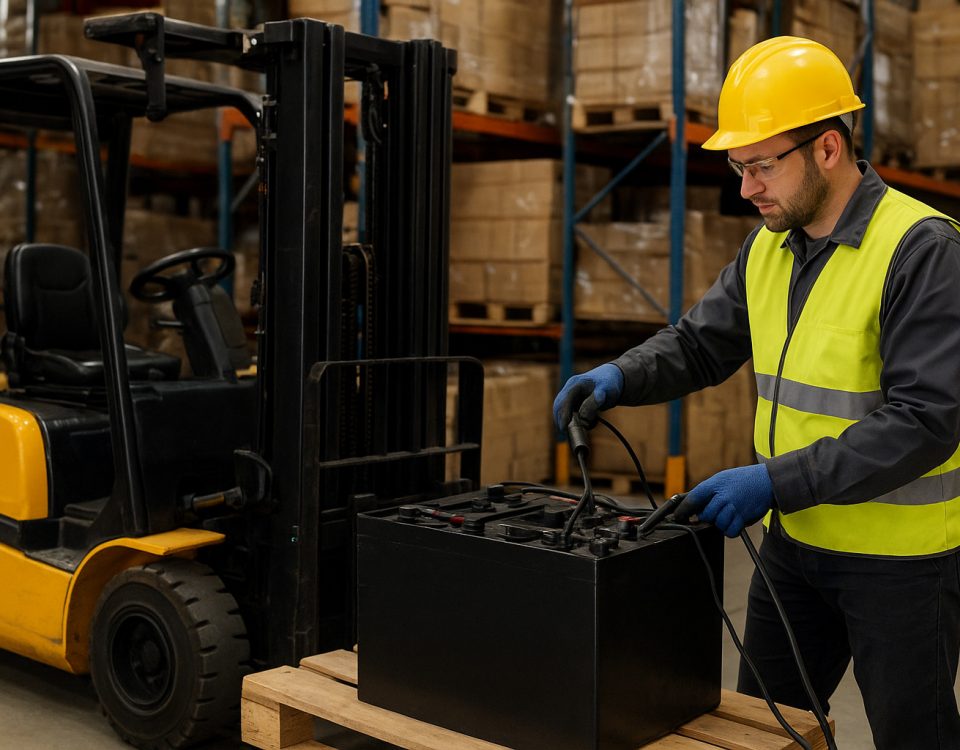Khi thế giới chuyển đổi sang các giải pháp năng lượng tái tạo, sự kết hợp giữa năng lượng mặt trời và hệ thống lưu trữ năng lượng đã thu hút sự quan tâm đáng kể. Một trong những công nghệ lưu trữ năng lượng hứa hẹn nhất là... Pin lithium sắt photphat (LiFePO4), đang đóng vai trò quan trọng trong các hệ thống lưu trữ năng lượng mặt trời. Với sự gia tăng nhu cầu về các giải pháp năng lượng sạch, việc hiểu rõ tính hiệu quả về chi phí của các hệ thống này là điều quan trọng đối với cả người tiêu dùng và doanh nghiệp. Bài viết này sẽ phân tích chi phí đầu tư ban đầu của các hệ thống lưu trữ năng lượng mặt trời, so sánh ưu điểm về chi phí của pin lithium iron phosphate so với pin chì-axit truyền thống, và thảo luận về cách các hệ thống này góp phần vào tiết kiệm kinh tế lâu dài và độc lập năng lượng.
Chi phí đầu tư ban đầu của hệ thống lưu trữ năng lượng mặt trời
Khi xem xét một Hệ thống lưu trữ năng lượng mặt trờiCâu hỏi đầu tiên mà hầu hết cá nhân và doanh nghiệp đặt ra là: “Chi phí đầu tư ban đầu là bao nhiêu?” Tổng chi phí lắp đặt hệ thống lưu trữ năng lượng mặt trời bao gồm nhiều thành phần, bao gồm tấm pin mặt trời, bộ biến tần và chính các pin lưu trữ năng lượng. Giá của từng thành phần có ảnh hưởng trực tiếp đến tổng chi phí ban đầu của hệ thống.
Chi phí thành phần
-
Tấm pin mặt trời:
Tấm pin mặt trời là trái tim của bất kỳ hệ thống năng lượng mặt trời nào. Giá cả đã giảm đáng kể trong thập kỷ qua, giúp năng lượng mặt trời trở nên dễ tiếp cận hơn với cả hộ gia đình, doanh nghiệp và ngành công nghiệp. Trung bình, chi phí của tấm pin mặt trời dao động từ $0.70 đến $1.00 mỗi watt, tùy thuộc vào chất lượng, thương hiệu và hiệu suất của tấm pin. -
Biến tần:
Biến tần năng lượng mặt trời là thiết bị cần thiết để chuyển đổi điện một chiều (DC) do các tấm pin mặt trời tạo ra thành điện xoay chiều (AC), có thể sử dụng trong các hộ gia đình hoặc doanh nghiệp. Giá của biến tần phụ thuộc vào công suất, nhưng thông thường dao động từ $1.000 đến $3.000 cho hệ thống dân dụng. -
Pin lưu trữ năng lượng:
Chi phí của hệ thống lưu trữ năng lượng là một trong những yếu tố quan trọng nhất ảnh hưởng đến giá thành tổng thể của các giải pháp lưu trữ năng lượng mặt trời. Pin lithium, đặc biệt là pin lithium sắt phốt phát (LiFePO4), là lựa chọn ưu tiên nhờ tuổi thọ cao, hiệu suất năng lượng tốt hơn và yêu cầu bảo trì thấp. Giá của pin lithium iron phosphate thường dao động từ $500 đến $800 mỗi kilowatt-giờ (kWh), tùy thuộc vào dung lượng và chất lượng.
Lợi thế về chi phí của pin lithium iron phosphate
Khi so sánh hiệu quả chi phí của Pin lithium sắt photphat So với ắc quy chì-axit truyền thống hoặc các công nghệ ắc quy lithium khác, có một số ưu điểm rõ ràng. Mặc dù chi phí ban đầu của ắc quy lithium sắt phốt phát có thể cao hơn so với các lựa chọn ắc quy chì-axit, nhưng lợi ích về tiết kiệm chi phí lâu dài và hiệu suất hoạt động vượt trội hoàn toàn bù đắp cho khoản đầu tư ban đầu.
Pin LiFePO4 so với pin chì-axit
-
So sánh chi phí ban đầu:
Pin chì-axit thường rẻ hơn pin lithium sắt phốt phát, với giá dao động từ $100 đến $300 mỗi kWh. Tuy nhiên, giá ban đầu thấp hơn đi kèm với một số nhược điểm về hiệu suất, tuổi thọ và yêu cầu bảo trì. Ắc quy chì-axit có tuổi thọ ngắn hơn (khoảng 3 đến 5 năm) so với ắc quy LiFePO4, có thể sử dụng từ 10 đến 15 năm. Ngoài ra, ắc quy chì-axit có mật độ năng lượng thấp hơn, nghĩa là chúng cần nhiều không gian hơn để lưu trữ cùng một lượng năng lượng. -
Tiết kiệm dài hạn:
Một trong những lợi ích chính của pin lithium iron phosphate (LiFePO4) là tuổi thọ cao. Một pin LiFePO4 thông thường có tuổi thọ dài gấp 2-3 lần so với pin chì-axit. Ngoài ra, pin lithium iron phosphate có tỷ lệ tự xả thấp hơn, nghĩa là chúng mất ít năng lượng lưu trữ theo thời gian. Điều này đồng nghĩa với việc ít phải thay thế pin hơn và bảo trì ít thường xuyên hơn, dẫn đến tiết kiệm chi phí đáng kể trong suốt vòng đời của hệ thống. -
Hiệu quả năng lượng:
Pin lithium iron phosphate (LiFePO4) nổi tiếng với hiệu suất sạc và xả cao (thường khoảng 90%), so với pin chì-axit chỉ đạt hiệu suất khoảng 70-80%. Điều này có nghĩa là nhiều năng lượng hơn được sản xuất bởi các tấm pin mặt trời được lưu trữ và sử dụng, giảm bớt nhu cầu sử dụng điện lưới.
So sánh chi phí với các công nghệ pin lithium khác
Mặc dù pin lithium sắt photphat (LiFePO4) có giá thành cao hơn so với các công nghệ pin lithium khác như pin lithium niken mangan coban (NMC) hoặc pin lithium niken coban nhôm (NCA), nhưng sự chênh lệch về chi phí thường bị bù đắp bởi những ưu điểm của LiFePO4. Pin LiFePO4 Các hệ thống này vốn dĩ an toàn hơn, có nguy cơ cháy nổ nhiệt thấp hơn và hoạt động ở nhiệt độ thấp hơn, từ đó giảm thiểu nguy cơ hư hỏng. Điều này khiến chúng trở thành lựa chọn bền bỉ và đáng tin cậy hơn cho các hệ thống lưu trữ năng lượng mặt trời.
Lợi ích kinh tế: Giảm chi phí điện năng và đạt được tự chủ năng lượng
Một lý do quan trọng khiến chủ nhà và doanh nghiệp đầu tư vào hệ thống lưu trữ năng lượng mặt trời là tiềm năng giảm hóa đơn điện và đạt được sự độc lập về năng lượng cao hơn. Bằng cách lưu trữ lượng năng lượng mặt trời dư thừa được sản xuất vào ban ngày, người dùng có thể giảm sự phụ thuộc vào lưới điện, đặc biệt là vào giờ cao điểm khi giá điện cao hơn.
Giảm chi phí điện
Một trong những lợi thế kinh tế quan trọng của hệ thống lưu trữ năng lượng mặt trời là khả năng giảm chi phí hóa đơn điện. Khi các tấm pin mặt trời sản xuất ra lượng điện lớn hơn nhu cầu sử dụng trong ngày, lượng điện dư thừa sẽ được lưu trữ trong pin để sử dụng sau này, đặc biệt vào buổi tối hoặc những ngày trời âm u khi sản lượng điện mặt trời thấp. Điều này giúp giảm nhu cầu mua điện từ lưới điện, từ đó có thể cắt giảm đáng kể chi phí năng lượng hàng tháng.
Ở những khu vực có giá điện cao hoặc hệ thống lưới điện không ổn định, hệ thống lưu trữ năng lượng mặt trời có thể cung cấp giải pháp năng lượng ổn định và hiệu quả về chi phí hơn. Bằng cách kết hợp tấm pin mặt trời với pin lithium iron phosphate, người dùng có thể giảm thiểu hoặc thậm chí loại bỏ sự phụ thuộc vào các công ty điện lực, đảm bảo chi phí năng lượng thấp hơn trong nhiều năm tới.
Lợi ích kinh tế cho hộ gia đình, doanh nghiệp và người sử dụng công nghiệp
Đối với chủ nhà, sự kết hợp giữa tấm pin mặt trời và hệ thống lưu trữ năng lượng mang lại cơ hội giảm hóa đơn điện và có thể tăng giá trị tài sản của họ. Trung bình, chủ nhà có thể thu hồi vốn đầu tư ban đầu trong vòng 7 đến 10 năm, tùy thuộc vào giá điện địa phương, các chính sách khuyến khích của chính phủ và hiệu suất của hệ thống năng lượng mặt trời. Các doanh nghiệp và người dùng công nghiệp, đặc biệt là những đơn vị có nhu cầu năng lượng cao, có thể tiết kiệm đáng kể bằng cách đầu tư vào hệ thống lưu trữ năng lượng mặt trời, giúp ổn định chi phí năng lượng và giảm chi phí sử dụng điện trong giờ cao điểm.
Lợi nhuận đầu tư dài hạn (ROI): Sự tương tác giữa tuổi thọ pin và hiệu suất hệ thống năng lượng mặt trời
Sự kết hợp giữa pin lithium iron phosphate và hệ thống năng lượng mặt trời mang lại những lợi ích tài chính lâu dài đáng kể. Tuổi thọ của pin lithium iron phosphate thường tương đương với tuổi thọ của các tấm pin mặt trời, thường có tuổi thọ từ 20 đến 25 năm. Sự kết hợp này đảm bảo rằng người dùng sẽ tiếp tục hưởng lợi từ một giải pháp năng lượng hiệu quả cao và ít bảo trì trong suốt thời gian hoạt động của hệ thống.
Theo thời gian, số tiền tiết kiệm được từ việc giảm hóa đơn điện và đạt được sự độc lập về năng lượng vượt xa khoản đầu tư ban đầu. Nhiều người dùng nhận thấy rằng tỷ suất hoàn vốn (ROI) lâu dài của hệ thống năng lượng mặt trời và lưu trữ của họ được nâng cao nhờ các chính sách khuyến khích của chính phủ, ưu đãi thuế và chi phí ngày càng giảm của các thành phần năng lượng mặt trời.
RICHYE: Nhà sản xuất pin lithium đáng tin cậy cho các giải pháp lưu trữ năng lượng mặt trời.
RICHYE là nhà sản xuất pin lithium chuyên nghiệp với bề dày kinh nghiệm trong việc sản xuất pin lithium sắt phốt phát chất lượng cao. Với hiệu suất vượt trội, an toàn, độ tin cậy cao và giá cả cạnh tranh, pin của RICHYE là lựa chọn lý tưởng cho hệ thống lưu trữ năng lượng mặt trời. Tập trung vào công nghệ tiên tiến và kiểm soát chất lượng nghiêm ngặt, sản phẩm của RICHYE được tin tưởng bởi người tiêu dùng và doanh nghiệp trên toàn thế giới. Dù là cho ứng dụng dân dụng hay công nghiệp, pin lithium sắt phosphate của RICHYE cung cấp giải pháp hoàn hảo để nâng cao hiệu suất và tuổi thọ của hệ thống năng lượng mặt trời.




